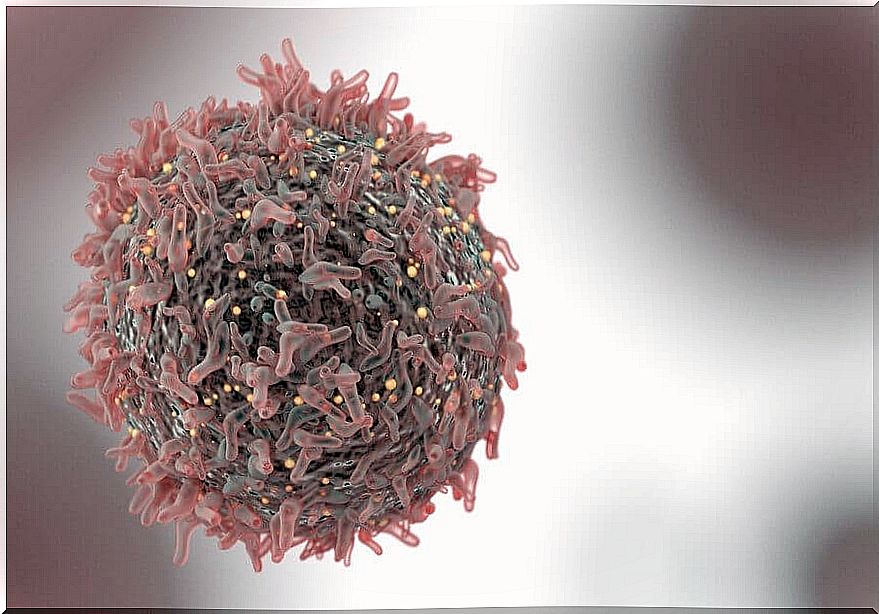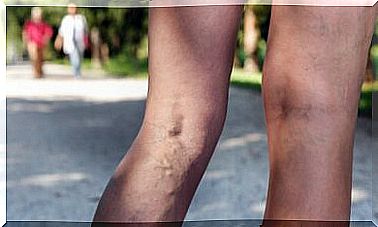Malherbe Calcifying Epitheliomas
Only very rarely are Malherb calcifying epitheliomas malignant. Most of the time they correspond to benign tumors that are removed with surgical treatment.

Calcifying Malherbe epitheliomas are also called benign Malherbe epithelioma, calcified Malherbe epithelioma, or pilomatrixoma. It is a type of benign tumor that occurs mainly in children and young people and is more common in women.
The first references to calcifying lesions are found in Galen and date from 200 AD. However, Malherbe’s calcifying epitheliomas were described by Malherbe and Chenantains in 1880. These researchers called it calcifying sebaceous cell epitheliomas.
In 1949, Lever and Griesemer pointed out that the tumor originated in the cells of the hair matrix. In 1965, Cantwell and Reed indicated that calcifying Malherbe epitheliomas were associated with myotonic dystrophy.
What are calcifying Malherbe epitheliomas?

Malherbe calcifying epitheliomas are benign tumors of ectodermal origin. They derive from the outermost cells that are in the root sheath of the hair follicle. Only very occasionally does it develop into a malignant tumor.
These types of tumors are associated with one or more mutations in the betacatenin gene (CTNNB1). In 94% of cases they are located on the face, neck and upper extremities. In 21% of cases they are located in the periorbital region.
More precisely, it has been established that Malherb’s calcifying epitheliomas have the following distribution: 30% on the neck, 17% on the cheeks, 16% on the scalp, and 14% on the eyebrow. They rarely appear on the eyelid or upper lip of the mouth.
Characteristics
Malherbe calcifying epitheliomas are well-defined tumors . The usual thing is that their size varies between 0.5 and 5 cm in diameter. However, cases of tumors of up to 15 cm have been described. They come in various shapes and have the same skin color, or are pink or purplish red.
According Carbajal and colleagues, these tumors are presented in three classical way ulcerotumoral, angioid and pseudoampollosa. About 40% of cases occur before 10 years of age and the remaining 60%, before 20 years. A minimum of cases have been reported in the sixth and seventh decades of life.
These tumors occur more frequently in women. They are generally asymptomatic, although there is sometimes some pain. Its malignant variant is very rare, but when it occurs it mainly attacks males in the fifth decade of life. In these cases, they are aggressive tumors with frequent lung metastases.
Malherb calcifying epitheliomas comprise two types of cells : basophilic epithelioids, which account for 50-75% of the tumor; and eosinophils, also called shadow cells , or ghost cells, which correspond to the remaining percentage.
Diagnosis

The diagnosis of calcifying Malherbe epitheliomas is usually clinical. However, a histopathological study must be carried out to corroborate this. The skin biopsy is the method through which, almost always, a definitive diagnosis is reached.
Because these tumors present a great clinical diversity, it is necessary to perform a differential diagnosis. It is easy to confuse them with other types of pathologies such as dermoid and epidermal cysts and calcinosis of the skin. Also with malignant diseases such as giant cell fibroblastoma and others.
Most commonly, a fine needle aspiration biopsy (FNA) is performed to corroborate the initial diagnosis. It is advisable to carry out 2 or 3 clinical studies to determine any previous diagnosis.
Additional information on calcifying Malherbe epitheliomas
Typically, the lesion caused by Malherb calcifying epitheliomas presents as a solitary nodule. This has a firm consistency and a lobed surface. It is easily movable with a single palpation.
The “tent” sign is typical of this class of injury. This sign refers to the fact that if when palpating the tumor the skin is tightened using the fingers, the lesion is felt to have a firm and lobulated consistency.
In addition to the clinical variants proposed by Carbajal and his collaborators, there are also other forms of this tumor such as: lymphangiectatic, exophytic, perforating and pedunculated. A very rare and curious variant is the giant pilomatrixoma, which usually appears in those who also suffer from Gardner syndrome.








